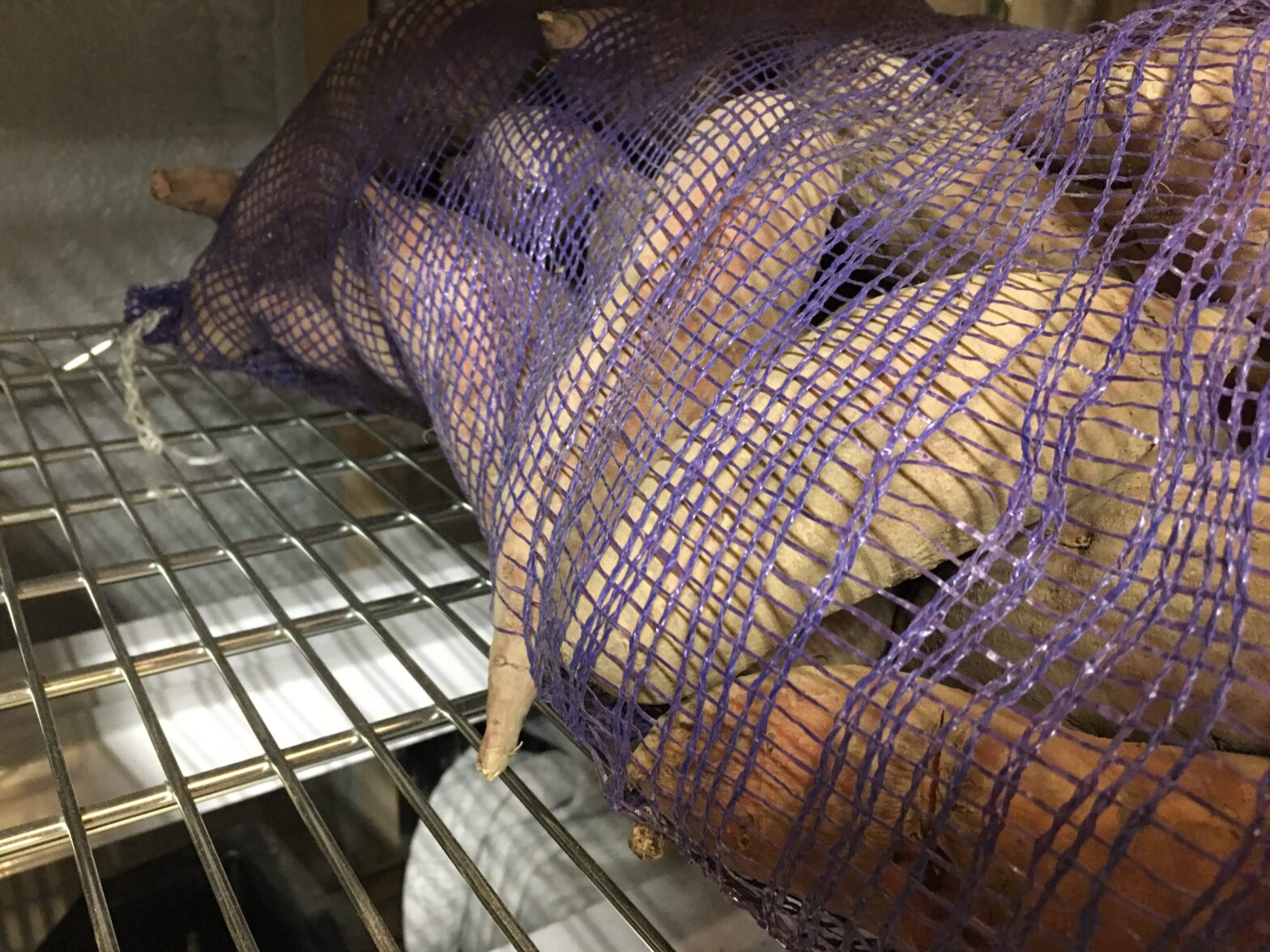Some crops like winter squash and sweet potatoes are ideally kept in “warm” rooms for long-term storage. It is also helpful to have some freeze protection even in cold storage rooms during the winter months when outside temperatures drop below the storage temperature. The information below should help accomplish both of these needs simply and inexpensively.
Knowing Your Heat Load
The first step in figuring out how to keep a space warm or prevent freezing is knowing how much heat will be needed. This depends on the size of the space, the insulation, air infiltration and the inside and outside temperatures. Our online calculator will help you determine how much heating you need to keep a specific space at the right temperature. A heat load is typically given in units of BTU/hr (British thermal units per hour) or Watts. Sometimes heater specifications simply state “BTUs” which can be read as BTU/hr. Electric heaters are typically rated in Watts and combustion appliances such as wood, propane, or fuel oil heaters or stoves are rated in BTU/hr. The calculator provides the heat load in both units and you can always convert between units knowing that there are 0.239 Watts per BTU/hr (or 3.41 BTU/hr per Watt).
It may be helpful to remember that storage crops are living organisms and they respire. Respiration gives off heat and moisture. Some growers are able to store warm storage crops without any additional heating when using a well-insulated and well-sealed room due to the heat given off from the crops. Winter squash, for example, has a high rate of respiration and can “self-heat.” For an estimate of respiration heat, you can use our crop storage planner.
Choosing a Heater
Select an appliance that is actually designed for heating. It may be tempting to use a lightbulb or heat lamp, but these can present other problems such as sprouting (due to light) or fire hazards (due to exposed hot surfaces). Some pointers:
- Choose a heater with a UL listing.
- Make sure there are fire protections included in the heater such as grates, stand-offs, tip sensors, and overheat switches.
- Heaters with lower maximum surface temperatures are generally going to be more safe.
- Choose a heater that will turn on when power is applied or one that has an integrated thermostat (see next section). Some heaters have a second step required after power is applied to activate it. These won’t work well with an external thermostat used for freeze protection.
Below are some heaters that should work well in this application.
Panel heaters with on/off control that would work with an external thermostat for freeze protection.
- Cozy Chicken Coop Flat Panel Heater – $40, 200 Watts. Available at Tractor Supply and Home Depot.
- AirChoice Electric Heater – $150, 400 Watts. Available on Amazon.
Oil filled heater with integrated thermostat best suited for warm room applications (won’t work well with an external thermostat).
- NewAir Electric Oil Filled Radiator Heater – $150, 1000 Watts. Available at Tractor Supply.
Controlling the Heat
Heaters are typically controlled by thermostats or timers. Timers simply turn the heater on for a period of time and don’t offer precise control of temperature. Thermostats measure temperature and turn a heater on or off based on that measurement. Read more at our post about thermostats.
Some heaters come with a thermostat integrated into the heater. This may be the easiest option for heating a warm room. Unfortunately, these integrated thermostats are most often designed for human comfort (>50 °F) and don’t go low enough to offer freeze protection for cold rooms.
An external thermostat with a wider range can be used to turn heaters on and off at lower setpoints such as 32 °F. These can be purchased with plugs attached to make installation easier. Check the amperage rating of the thermostat compared to the heater(s) you plan to control. Some examples are provided in this post.
Distributing the Heat
It may be helpful to add a small circulation fan in the room to distribute the heat throughout the space. Aim for 2-4 cubic feet per minute of air flow per square foot (CFM/ft2) of storage space. For example a 10 foot x 10 foot warm room should have 200-400 CFM of circulation air flow which is generally one or two small fans. Consider a wall or ceiling mount fan to keep it out of the way and to prevent it being knocked over or falling over.
Air circulation is important even if trying to make the most of respiration heat from the crops. It is also helpful to leave some space between storage bins and also between bins and the wall. This allows air to pass more freely so that all storage crops see the same conditions. Remember that stored produce is alive and respiring, so air circulation can help prevent hot spots and areas of high humidity and condensation.
Share this post!
Use this short link for easily sharing of this resource. https://go.uvm.edu/warmrooms
Acknowledgements
Funding for this publication was made possible, in part, by the USDA Northeast Sustainable Agriculture Research and Education program through award LNE19-375, by the Food and Drug Administration through The Vermont Agency of Agriculture Food and Markets via the Integrated Extension Educational Programming in Support of the VAAFM Produce Program Grant 02200-FSMA-2018-01. The views expressed in the publication do not necessarily reflect the official policies of the U.S. Department of Agriculture, the U.S. Department of Health and Human Services or the Vermont Agency of Agriculture; nor does any mention of trade names, commercial practices, or organization imply endorsement by the United States Government or the State of Vermont.
